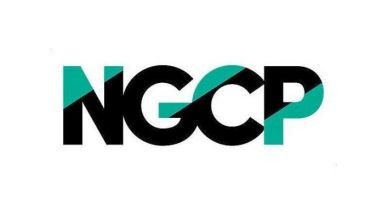Due to lower oil prices: Sept imports drop to $4.32B
November 25, 2006 | 12:00am
Philippine imports slipped for the first time in 18 months in September due to declining purchases of parts by electronics manufacturers and lower global oil prices.
Overseas purchases dropped 0.3 percent to $4.324 billion in September from $4.337 billion in the same period last year, the National Statistics Office (NSO) reported yesterday. It was the first time imports fell since March 2005.
Two thirds of Philippine imports are used to make computer parts, discs and other electronic products for exports abroad.
"It’s related to slowing demand and economic growth in the US, the biggest destination for Philippine exports," said Tomo Kinoshita, an economist at Nomura Securities Co. in Singapore. "Manufacturers are likely to hold off expansion plans as they watch how much global demand will slow."
The government statistics office said earlier exports rose 13.2 percent $4.16 billion in September, giving a trade deficit of $169 million, down from $662 million a year earlier due to higher exports.
For the first nine months of the year, imports grew 8.9 percent to $38.18 billion while exports rose 16.4 percent to $35.113 billion, giving a trade deficit of $3.07 billion.
In a telephone interview, University of Asia and the Pacific economist Victor Abola said the decrease in imports will have a negative effect on October export data.
Electrical machinery imports decreased 10.4 percent for September. Abola said this would translate to at least two percent decrease in electronics exports.
As to the effect on the country’s over-all growth, Abola said "there will be a light impact on the short term."
Meanwhile, total merchandise trade for the month went up by 12.3 percent to $73.293 billion from $65.236 billion during the same period last year
Electronics, which account for over 44 percent of total import bill in September, rose 8.9 percent to $2.20 billion. The bulk of these imports are parts for the country’s own electronics exports.
Semi-conductors are still the main electronic imports amounting to $1.710 billion.
The statistics agency said imports of mineral fuels, lubricants and related materials, which ranked second, fell 37 percent to $477.57 million in September from $757.51 million due to the reduction in the expenditures on crude petroleum, fuel, motor spirit and other heavy petroleum oils.
Transport equipment is the third top import amounting to $230.01 million, higher than a year ago of $159.26 million. The increase was due to the country’s more demand for airplanes and other aircrafts, passenger cars, and other components, parts and accessories of other motorcycles and cycles acquisition.
Also, the country imported a total of 173.81 million worth of industrial machinery and equipment. The figure was 10.7 percent lower than September 2005’s $194.57 million.
Organic and Inorganic Chemical recorded a share of 2.1 percent or $89.20 million worth of imports.
Expenditures for imported goods lessened by 0.3 percent to $4.324 billion from $4.337 billion. The balance of trade in goods registered a deficit at $169 million, lower from last year’s deficit of $662 million.
The data likewise noted that the country’s biggest source of imports is now Japan with the Philippines sourcing 16.2 percent of imported commodities.
Imports to Japan amounted to $646.25. Imports from United States on the other hand dropped by 23.6 percent to $658.03million from $861.71 million during the same period of 2005.
Overseas purchases dropped 0.3 percent to $4.324 billion in September from $4.337 billion in the same period last year, the National Statistics Office (NSO) reported yesterday. It was the first time imports fell since March 2005.
Two thirds of Philippine imports are used to make computer parts, discs and other electronic products for exports abroad.
"It’s related to slowing demand and economic growth in the US, the biggest destination for Philippine exports," said Tomo Kinoshita, an economist at Nomura Securities Co. in Singapore. "Manufacturers are likely to hold off expansion plans as they watch how much global demand will slow."
The government statistics office said earlier exports rose 13.2 percent $4.16 billion in September, giving a trade deficit of $169 million, down from $662 million a year earlier due to higher exports.
For the first nine months of the year, imports grew 8.9 percent to $38.18 billion while exports rose 16.4 percent to $35.113 billion, giving a trade deficit of $3.07 billion.
In a telephone interview, University of Asia and the Pacific economist Victor Abola said the decrease in imports will have a negative effect on October export data.
Electrical machinery imports decreased 10.4 percent for September. Abola said this would translate to at least two percent decrease in electronics exports.
As to the effect on the country’s over-all growth, Abola said "there will be a light impact on the short term."
Meanwhile, total merchandise trade for the month went up by 12.3 percent to $73.293 billion from $65.236 billion during the same period last year
Electronics, which account for over 44 percent of total import bill in September, rose 8.9 percent to $2.20 billion. The bulk of these imports are parts for the country’s own electronics exports.
Semi-conductors are still the main electronic imports amounting to $1.710 billion.
The statistics agency said imports of mineral fuels, lubricants and related materials, which ranked second, fell 37 percent to $477.57 million in September from $757.51 million due to the reduction in the expenditures on crude petroleum, fuel, motor spirit and other heavy petroleum oils.
Transport equipment is the third top import amounting to $230.01 million, higher than a year ago of $159.26 million. The increase was due to the country’s more demand for airplanes and other aircrafts, passenger cars, and other components, parts and accessories of other motorcycles and cycles acquisition.
Also, the country imported a total of 173.81 million worth of industrial machinery and equipment. The figure was 10.7 percent lower than September 2005’s $194.57 million.
Organic and Inorganic Chemical recorded a share of 2.1 percent or $89.20 million worth of imports.
Expenditures for imported goods lessened by 0.3 percent to $4.324 billion from $4.337 billion. The balance of trade in goods registered a deficit at $169 million, lower from last year’s deficit of $662 million.
The data likewise noted that the country’s biggest source of imports is now Japan with the Philippines sourcing 16.2 percent of imported commodities.
Imports to Japan amounted to $646.25. Imports from United States on the other hand dropped by 23.6 percent to $658.03million from $861.71 million during the same period of 2005.
BrandSpace Articles
<
>
- Latest
- Trending
Trending
Latest
Trending
Latest
Recommended




























